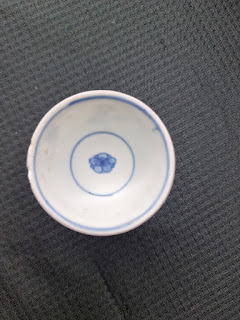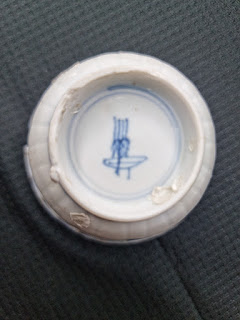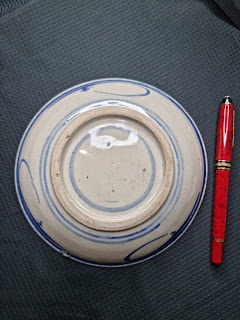I'm delighted to share with you a remarkable story that combines maritime archaeology, imperial Chinese craftsmanship, and centuries of cultural heritage.
We'll be exploring extraordinary porcelain, pottery, and ceramics discovered from a sunken vessel in the South China Sea - treasures that once graced the tables of Chinese emperors during the Ming and Qing dynasties.
The South China Sea has long been a vital maritime trade route, connecting China with Southeast Asia and beyond. Among the many shipwrecks discovered in these waters, one particular vessel has yielded an extraordinary collection of Chinese ceramics.
This sunken ship, dating from the Ming and Qing periods (roughly 14th-20th centuries), serves as a time capsule, preserving these delicate art pieces for hundreds of years beneath the waves.
What Was Found
The archaeological recovery revealed:
- Exquisite porcelain cups and small saucers
- Various pottery vessels and ceremonial pieces
- Decorative ceramics showcasing imperial craftsmanship
- Pieces bearing the distinctive marks and styles of both Ming and Qing dynasties
The Ming Dynasty Legacy
Imperial Porcelain Excellence
During the Ming Dynasty (1368-1644), Chinese porcelain reached unprecedented heights of artistic and technical achievement. The imperial kilns produced pieces exclusively for the emperor's court, characterized by:
- Blue and white designs - The iconic cobalt blue decorations on white porcelain
- Perfect proportions - Cups and saucers with elegant, refined shapes
- Imperial symbolism - Dragons, phoenixes, and other royal motifs
- Technical mastery - Flawless glazing and firing techniques
The Emperor's Collection
Chinese emperors were renowned connoisseurs who demanded perfection. Each piece in their collection was:
- Carefully selected for its artistic merit
- Crafted by master artisans in imperial workshops
- Used in elaborate court ceremonies and daily imperial life
- Considered symbols of imperial power and cultural sophistication
The Qing Dynasty Continuation
Evolution of Style
The Qing Dynasty (1644-1912) inherited and expanded upon Ming traditions while introducing new artistic elements:
- Famille rose - Delicate pink and rose-colored enamels
- Increased color palette - More vibrant and diverse decorative schemes
- Western influences - Subtle incorporation of European design elements
- Technical innovations - Advanced glazing and decorative techniques
Imperial Patronage
Qing emperors, particularly during the Kangxi, Yongzheng, and Qianlong reigns, were passionate collectors who:
- Commissioned special pieces for palace use
- Maintained the highest standards of craftsmanship
- Preserved traditional techniques while encouraging innovation
- Created pieces that reflected both Chinese heritage and contemporary tastes
The Remarkable Cups and Saucers
Why These Pieces Are Special
The porcelain cups and small saucers from this shipwreck are particularly significant because they represent:
Artistic Excellence
- Demonstrate the pinnacle of Chinese ceramic artistry
- Show the refined taste of imperial courts
- Represent centuries of accumulated knowledge and skill
Historical Significance
- Provide insight into imperial daily life and ceremonies
- Show the extent of China's maritime trade networks
- Preserve techniques that might otherwise be lost
Cultural Value
- Embody Chinese aesthetic principles of harmony and balance
- Reflect the philosophical and spiritual beliefs of their time
- Connect us to the living traditions of Chinese craftsmanship
Maritime Trade and Cultural Exchange
The Trading Network
The presence of these imperial-quality pieces on a trading vessel highlights:
- China's extensive maritime commerce during the Ming and Qing periods
- The high value placed on Chinese ceramics by international markets
- The risks merchants took to transport these precious cargo across dangerous seas
Cultural Impact
These discoveries help us understand:
- How Chinese artistic traditions spread throughout Asia
- The role of porcelain in diplomatic gift-giving
- The economic importance of ceramic exports to imperial China
Conservation and Legacy
Preservation Challenges
Recovering these pieces from the sea required:
- Careful archaeological techniques to prevent damage
- Specialized conservation methods to remove salt deposits
- Expert restoration to reveal their original beauty
Modern Significance
Today, these recovered treasures:
- Provide invaluable insights into Chinese imperial culture
- Inspire contemporary ceramic artists and collectors
- Serve as bridges between past and present artistic traditions
- Remind us of the enduring appeal of Chinese craftsmanship
Conclusion
The porcelain, pottery, and ceramics discovered from this South China Sea shipwreck offer us a unique window into the world of Chinese imperial courts. These cups and saucers, once cherished by emperors, now serve as ambassadors of Chinese culture, speaking to us across centuries about the pursuit of beauty, excellence, and artistic perfection.
Through these remarkable pieces, we can appreciate not only the technical mastery of Chinese artisans but also the cultural values and aesthetic principles that have shaped Chinese civilization for millennia.
The fact that these treasures survived centuries beneath the waves and have been brought back to light reminds us that true artistry transcends time, and that the pursuit of beauty and craftsmanship remains one of humanity's most enduring and noble endeavors.
Thank you for joining me on this journey through time, art, and the depths of the South China Sea.
Brief info Shipwreck
Sheet glass, bottles and other debris on an 1850's era Shipwreck
We always on the lookout for more shipwrecks in S.E.A! If you know of any good shipwreck sites (NOT the WWII steel wrecks. We're only interested in the OLD SPANISH GALLEONS, CHINA JUNKS, etc.) then please email us, with the minimum info as follows:
1) S.E.A country name and general shipwreck location.
2) Description of what was found so far on the wreck. If you could send some photos of anything recovered that's a big plus.
3) Description of what remains on the wreck today.
4) Water depth.
5) How did you come to know about this wreck?
6) All your contact info including your Phone number.
























